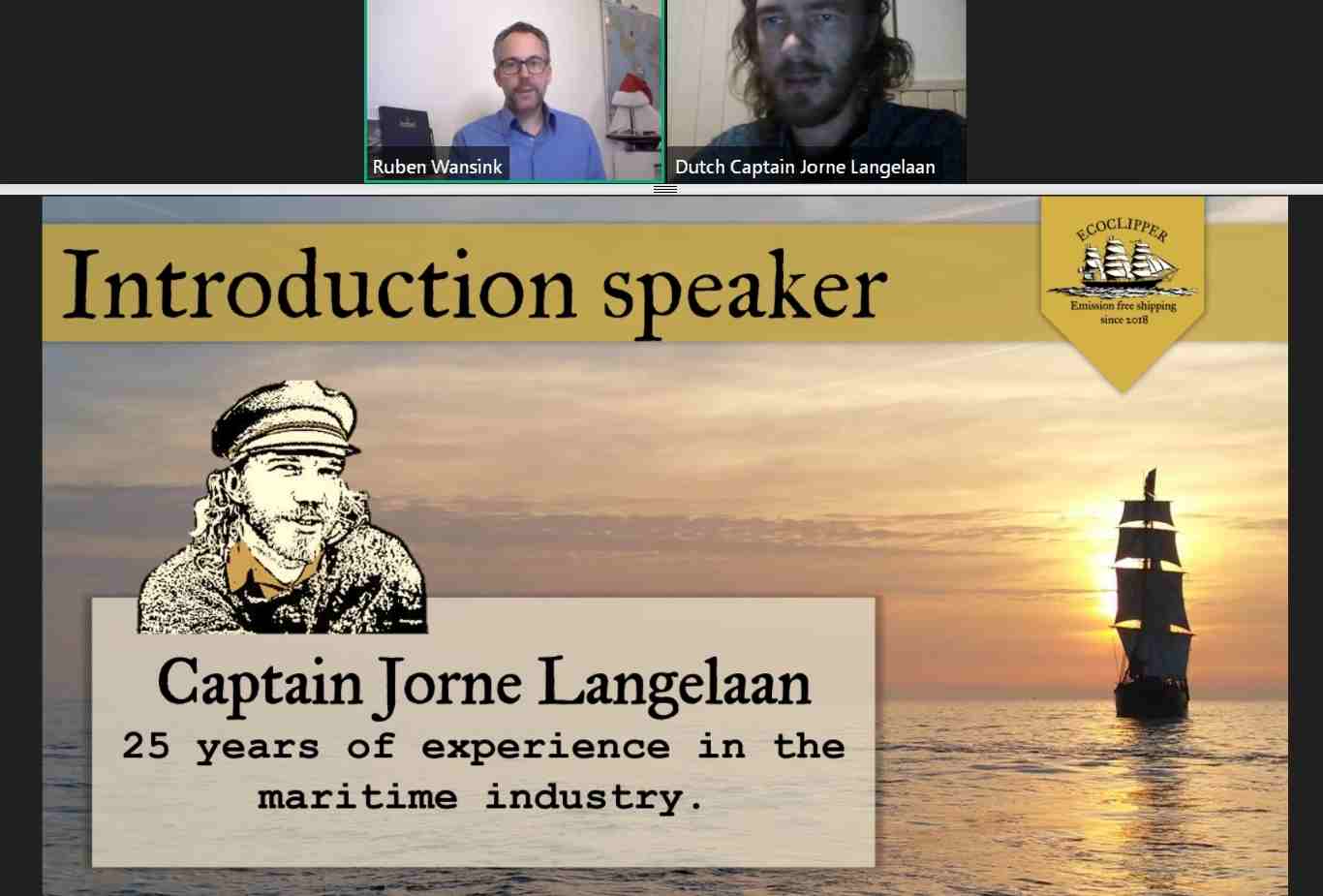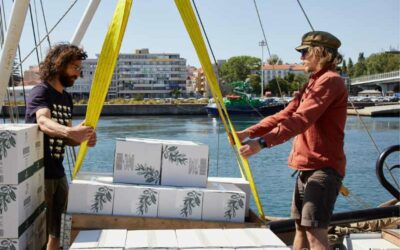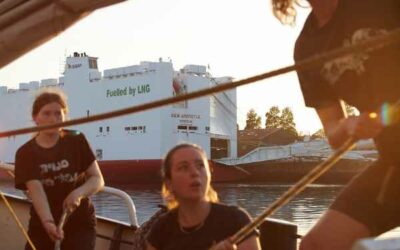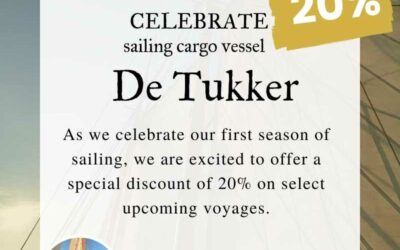In December 2020 Jorne chatted with Ruben Wansink for KNVTS (Royal Dutch Association of Shipping Engineers). KNVTS originated in 1898 and “aims to stimulate developments in maritime technology.”

With over 100 attendees, the talk ranged from the history of shipping, to the aims of EcoClipper and finished with questions from the audience.
The following questions and answers are collated from the webinar and cover a range of topics such as sustainable shipping, the EcoClipper500 design and autonomous technology!
Q) How can EcoClipper compete with container ships for commercial viability?
A) EcoClipper ships obviously will be much smaller than containerships and therefore it’s hard to compare the two. To carry the current world trade a huge number of ships would need to be built. What really needs to happen is less cargo should be shipped. The key is to localise industries. By doing so, only a small amount of goods will need to be transported, and these can be shipped by sailing vessel.
The first EcoClipper ship will be just under 500 gross tonnage, but of course these can develop into larger sailing ships in the future.
Q) When will the ship be built?
A) She will be built as soon as the finances are available and the shipyard and EcoClipper have signed a Letter of Intent and further agreements. Talks with a shipyard are already underway. Whilst part of the financing will come from a shipping loan from financial institutions, there will also be opportunities for investors, as well as a crowdfunding campaign. Those interested in investing in the first ship have received a preliminary business brochure.
If you are interested in investing, fill out the ‘invest’ form to receive the proposal brochure and further updates here: https://ecoclipper.org/invest/
Q) Why use a traditional square rig and ship design?
A) A common question! Firstly, the main developments in sailing rig design over the last 50 years was in yachting, as commercial vessels were already predominantly using mechanical propulsion. These yacht design developments were based on weight reduction – something that is not necessary for cargo vessels.
I have sailed with gaff rigs and Bermuda rig yachts, but for cargo you need a lot of sail area to push the weight of the ship through the water. The height of the rig gives the most amount of sail area compared to gaff and triangular sails too. For sailing cargo ships, the highest point of design was therefore square sail rigs.
Also, we know square rig works! There are wind-assist designs for shipping vessels that use less fuel, which is great, but not useful in all sailing conditions. Square sails are more adaptable.
In terms of ship design, the hull shape was taken from the Noach, a successful, fast clipper that operated for a period of 20 years. At the beginning, EcoClipper didn’t have funds to start from scratch so we decided to copy something successful!
If you look at the science to stay within 1.5 degree – we need to reduce emissions fast. There is no longer the luxury to continue using engines.The most straightforward way is to build emission-free vessels is to use fully bred sailing ships.
Q) What do you feel are the biggest obstacles to achieving more sustainable shipping?
A) Currently, the mentality of governments is a big obstacle. The red tape around shipping in this way is extensive and subsidies going to motor shipping and airlines make it hard to push through with alternatives. It also means money that should be going towards reducing emissions and a more sustainable future are still being put into industries that are doing the exact opposite. Furthermore, it takes time to build the momentum of having so many ships that sail cargo becomes mainstream, and available on all possible routes.
There are changes happening however, such as the IMO introducing a cap on emissions for ships and in 2019 the Poseidon Principles were established which set a framework for financial institutions to include climate considerations into lending decisions.
Q) Do you see a combination of autonomous technology and sail cargo?
A) In a practical sense, autonomous technology would not be useful on a sustainable sailing ship like the EcoClipper500. These ships need people to physically steer and to manually power the sails which requires no added energy from engines.
The more philosophical answer is that people need to live satisfactory lives. What is more appealing than setting sail on a large sailing vessel, feeling the salt on your lips? I would like to introduce as many people as possible to this kind of life and become closer to nature that way.
With an autonomous ship, who would benefit from them if there’s nobody on board? It would be owned by the happy few, on land, who would make a lot of money, when others are jobless. In this world we don’t lack people and sailing is a satisfying career.
Q) Is there potential to develop coastal distribution from larger ships using smaller ships?
A) Yes, absolutely! This makes total sense. We see already smaller ships sailing around (Tres Hombres, De Gallant, Avontuur, Kwai to name a few) in the future they could take cargoes from EcoClipper ships and distribute to different ports. EcoClipper ships will be built for deep-sea routes so can make very few ports in each continent. By using smaller sailing ships to distribute the cargo to smaller ports on the coast, or even inland, would be a fantastic thing. This of course isn’t a new innovation, this is a way that logistics used to be carried out, so it can work.
Q) How would EcoClipper ships keep to a schedule?
A) It will not be possible to say exactly when a ship will arrive – it will be an estimate. For 10 years I have working with Fairtransport, first as co-founder, shipping agent, broker, Captain on board and shareholder. Looking at previous sailing schedules most of the time Tres Hombres sails within the schedule, sometimes earlier or later. It’s about planning with extra time, using prevailing winds and making an estimate. It might be true that you have your goods later, but when it’s totally emission free it’s a small price to pay for it!




